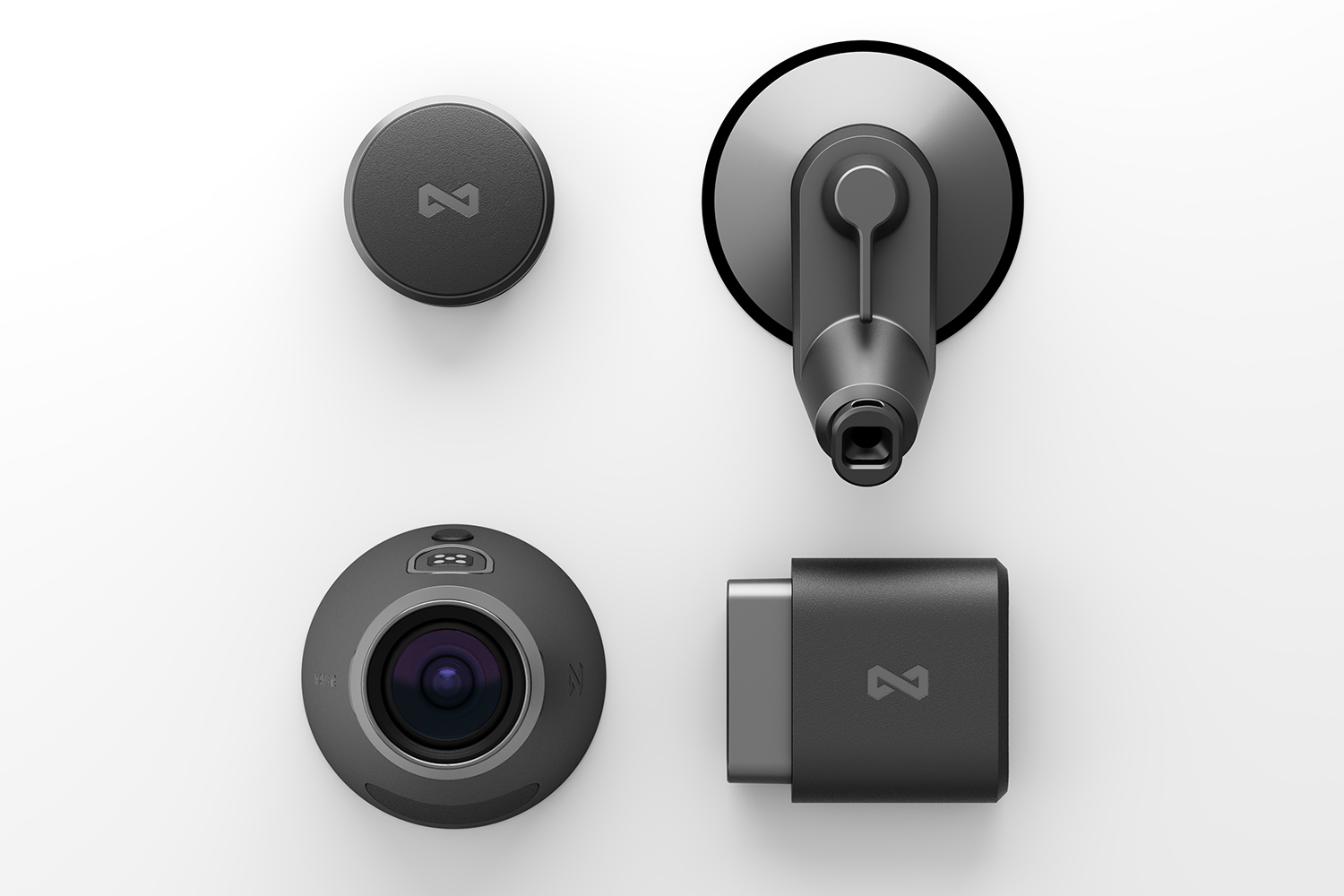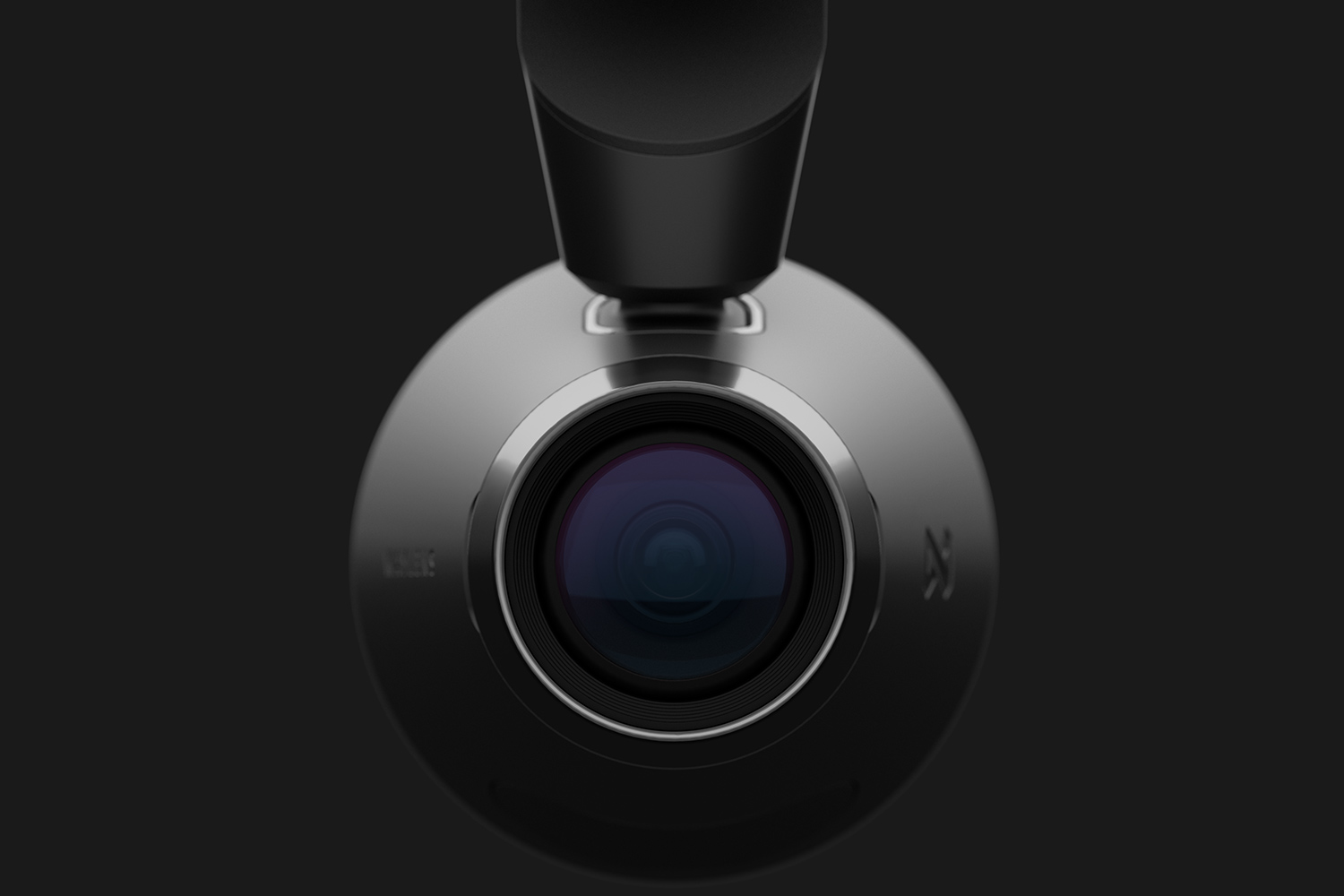But could a new type of dashcam actually encourage poor driving, instead of just capturing it?
That’s the question we found ourselves asking upon discovering Waylens, a race-centric dashcam made for capturing footage that looks like it’s straight out of Forza 6. Its founders recently surpassed their funding goals by more than 600 percent on Kickstarter, and the cameras will be perched on a dash near you as early as April, 2016.
A dashcam for the throttle jockeys
Like most dashcams, the Waylens sticks to your windshield and records your driving on a constant loop. But unlike most dashcams, the Waylens can overlay performance data on top of its HD footage in the form of dashboard gauges, giving drivers videogame-caliber instant replays of any moment they choose. The data comes from the camera’s own internal 9-axis motion sensor (gyro, accelerometer, magnetometer) plus data that it skims from your vehicle’s engine computer with an included OBD-II dongle.
A steering-wheel remote button lets drivers instantly “bookmark” exciting or memorable moments so they can find them later, and the Android or iOS app can also be used to instantly upload those moments to the cloud. They can even be automatically shared to social networks — the default setting is a 15-second clip. Or, you can take a passive approach and let the app do the work. It automatically notes the most interesting sections of your drive based on the data it collects. High speeds, revs or G-forces will all be noted so you can quickly grab the best bits later. The back of the Waylens even has a circular OLED touchscreen display that can double as a gauge for RPM, boost, speed, G forces, or pitch and roll.
‘Watch this!’
The obvious concern with Waylens is that it could inspire non-racing minded drivers to be more reckless on public roads in the hopes of capturing bragging rights footage that they can then share online, so they can be high-fived by their peers.
Cameras may change the way people behave, especially teens, whose risk-taking behavior doubles when peers are around. Researcher Janessa Graves, Ph.D. told ParentMap she thinks social-media sharing contributes to adolescent and teen risk-taking, at least as it relates to skiing and snowboarding.
“They have this ‘YouTube dream’ — as we call it — they’ll do anything to get that perfect shot,”
Brad Patterson, a professional skydiver working in California, sees it all the time in beginners. “They have this ‘YouTube dream’ — as we call it — they’ll do anything to get that perfect shot,” he told Mpora. “They’ll risk their lives to get it.”
Of course, idiots hardly need the extra incentive that the Waylens provides to be, well, idiots. Long before the Waylens or even GoPro, adrenaline junkies were coming up with creative ways to share their street-driving exploits. The iconic short film Rendezous depicts director Claude Lelouch tearing through the streets of Paris in his Mercedes (using a dubbed Ferrari engine soundtrack) – without much concern for safety despite the early hour of the day. He shot it on film, in 1976.
Waylens CMO Mike Schmidt says that his team is well aware that their product could be used for capturing of dangerous or illegal driving. “We definitely don’t want to encourage people to drive irresponsibly,” he says. To back that up, he claims that the company will be “monitoring how people use the product,” by keeping an eye on what gets uploaded to their cloud service and warns that Waylens will “deny service to irresponsible drivers.”
He’s also quick to note that it can be used for legal thrill seeking. “Our backers say they want to use it at track days or autocross events,” he notes, adding that he expects a third of customers will use it off road. Of course, the Kickstarter might be giving backers other ideas. The promotional video clearly shows drivers tearing around dimly lit back alleys and twisty back roads — public streets, not the track.
You’re being watched
Jen Horsey, a former rally racer who now works in motorsport marketing and communications, doubts that the Waylens will suddenly create a rash of new dashcam-inspired recklessness. “If anything, knowing there’s a record rolling right there on your dashboard ought to make people reconsider doing dangerous things,” she says.
Reuben Aitchison, a spokesman for Australian insurance company AAMI, agrees. “People who have dash cams are probably going to be more cautious about their driving,” he told Drive. “You do see things like that start to influence people’s behavior.”
“We definitely don’t want to encourage people to drive irresponsibly.”
Conventional dash cams typically keep a constant record of day-to-day driving; they’re a form of surveillance, even if it’s one owners agree to. We all tend to behave better when we know we’re being “watched.”
But the Waylens is being primarily marketed as a “Look at my driving!” tool, not a keep an eye on my driving,” tool — and that’s an important difference.
Defenders will point to the many ways Waylens can be used legitimately and safely for its intended purpose as a quick and easy way to record exciting moments both on and off the track. But if you’re a serious autosports enthusiast, does the Waylens actually deliver something new?
Horsey isn’t convinced real racers would even go for it. “The video/data combo shown in this Kickstarter campaign looks a little lightweight for the pros,” she says, “there isn’t much to it.” She also notes that enthusiasts already have plenty of options for recording their track performance. “For the price of a $15 cable, you can plug your iPhone into your car’s OBD II port and get all the data you need.”
However she does think it could appeal to the weekend warrior and likes that will automatically identify “interesting” clips.
Still the best dashcam?
If you use the Waylens simply for its dashcam capabilities, it should prove very capable, thanks in large part to its low-light recording. In a sample video on Kickstarter page, you can compare the Waylens’s nighttime performance with that of GoPro Hero4. The Waylens is sharper and offers much better handling of the tricky lighting conditions. “Action cameras don’t do well with nighttime,” Schmidt points out, “the Waylens lens, the sensor and the processor were chosen to perform best at night.”
The addition of data from both the car’s on board systems and the camera’s sensors also makes the Waylens a superb “black-box” in the event of a crash. Being able to play back video of an accident, along with corresponding speed and other data, could heavily affect the outcome of litigation.
With these possibilities, maybe we’ll see Waylens-level technology built into all vehicles someday. It could be a boon to crash investigators, and help set the record straight on exactly what happened.
In the meantime, let’s hope that those who hope to find YouTube fame behind the Waylens keep their stunts off the streets. And if they don’t, well I suppose there’s a certain Darwinian likelihood they’ll end up being their own worst enemy.
Editors' Recommendations
- Waymo’s self-driving cars can’t get enough of one dead-end street
- Waymo’s next-gen self-driving tech can see what’s happening 500 meters ahead
- A self-driving Hyundai can pick you up in one California city starting next month






















